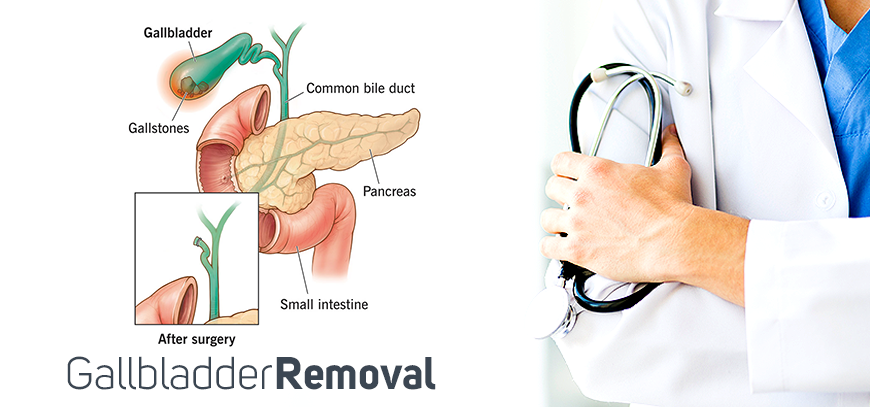Working Time
- Mon-Fri… 09:00 – 19:00
Saturday 09:00 – 14:00
Contact Info
-
Phone: +52 663 158-6186
Ask Dr. Ismael Bailon
Cholecystectomy - Gallbladder Removal

You might need to have a cholecystectomy surgery to remove your gallbladder, if you have a chronic or persistent gallbladder disease. Gallstones are the most common reason.
If you have one, you will be in good company. It is one of the most common procedures performed worldwide. At The Center for Bariatrics, in Tijuana, Mexico, Dr. Ismael V. Bailon offers it as a laparoscopic procedure.
What is a cholecystectomy?
A cholecystectomy is a surgical procedure to remove your gallbladder — the small, hollow organ that stores bile for your digestive system.
Gallbladder removal surgery is a common treatment for many types of gallbladder disease. This is because the downsides of having your gallbladder removed are generally fewer than those of the diseases it treats. You can live a healthy life without a gallbladder.
Is cholecystectomy a major surgery?
Cholecystectomy is a common procedure with a typically easy recovery. It’s also one of the first procedures that’s become routinely performed using minimally invasive surgery techniques.
These techniques, including laparoscopic surgery and robotic surgery, use very small incisions of a half-inch or less to minimize trauma, pain and recovery time. While an open operation with a larger incision may occasionally be necessary, laparoscopic cholecystectomy is far more common today than open surgery.
Why is cholecystectomy done?
You might need gallbladder removal surgery if gallbladder disease:
- Interferes with your quality of life.
- Poses significant risks to your health.
- Is expected to continue and/or get worse.
Unfortunately, this is the case with most of the conditions that can affect your gallbladder, including:
- Gallstone disease.
- Chronic cholecystitis.
- Gallbladder cancer.
Gallstones are the most common reason for cholecystectomy. While many people live with gallstones and never have problems with them, those who do have problems tend to have them repeatedly.
A gallstone that gets stuck anywhere in your biliary tract can block the flow of bile, causing pain and illness. It might block the opening to your gallbladder, your common bile duct or your pancreatic duct.
What happens during a cholecystectomy?
During a laparoscopic cholecystectomy, your surgeon will:
- Make a small incision, about 2 or 3 centimeters (cm) long, near your belly button.
- Make two to three additional “keyhole” incisions, about 1 centimeter long, in your upper right abdomen.
- Insert a small tube into one of the smaller incisions and pump carbon dioxide gas through it to inflate your abdomen. This helps to separate your abdominal walls from your organs.
- Insert the laparoscope into the larger incision. The laparoscope (a small, lighted camera) projects images to a video monitor above the operating table.
- Using the video monitor as a guide, insert narrow surgical tools through the one or two remaining incisions to remove your gallbladder.
- Release the gas from your abdomen and close the incisions with stitches.
During an open cholecystectomy, Dr. Ismael V. Bailon will:
- Make one incision, about 4 to 6 inches (in) long, underneath your right rib.
- Use surgical tools to remove your gallbladder.
- Insert a surgical drain (Jackson Pratt drain) into the wound to drain excess fluids.
- Close the incision with stitches, leaving the drain in place.
How long does gallbladder removal surgery take?
A laparoscopic cholecystectomy normally takes about 60 to 90 minutes. An open cholecystectomy takes about one to two hours. Your procedure might take longer if your surgeon needs to add additional steps to treat your condition.
For example, sometimes they might add a bile duct exploration to check for gallstones or other issues in your bile ducts. This way, they can treat these issues at the same time.
Most gallstones develop inside your gallbladder, so removing your gallbladder significantly reduces the chance that you’ll have any more. If gallstones have brought you to the hospital once, they’re likely to do so again.
Cholecystectomy is the only treatment that can reliably prevent this. Most people feel it’s easier to have a planned procedure than to expect to have repeat episodes of gallstone emergencies.
The recovery time from a laparoscopic cholecystectomy is about two weeks. Recovery from an open cholecystectomy takes six to eight weeks. If you still have a drain in your wound, your healthcare team will remove it at your next appointment.
Most people can return to work after one to two weeks. But if you do a lot of physical activity, you might need to modify your routine until you’re fully recovered.
Most people have only short-term side effects during their recovery. These might include:
- Diarrhea. This can happen as your digestive system adjusts to its new structure.
- Constipation. This can occur as a side effect of pain medications.
- Gas and gas pain. This is a side effect of the gas they use in laparoscopic surgery.
- Nausea. This can be an effect of your pain medications.
Dr. Eduardo Cardenas can offer advice on how to manage these short-term conditions.
